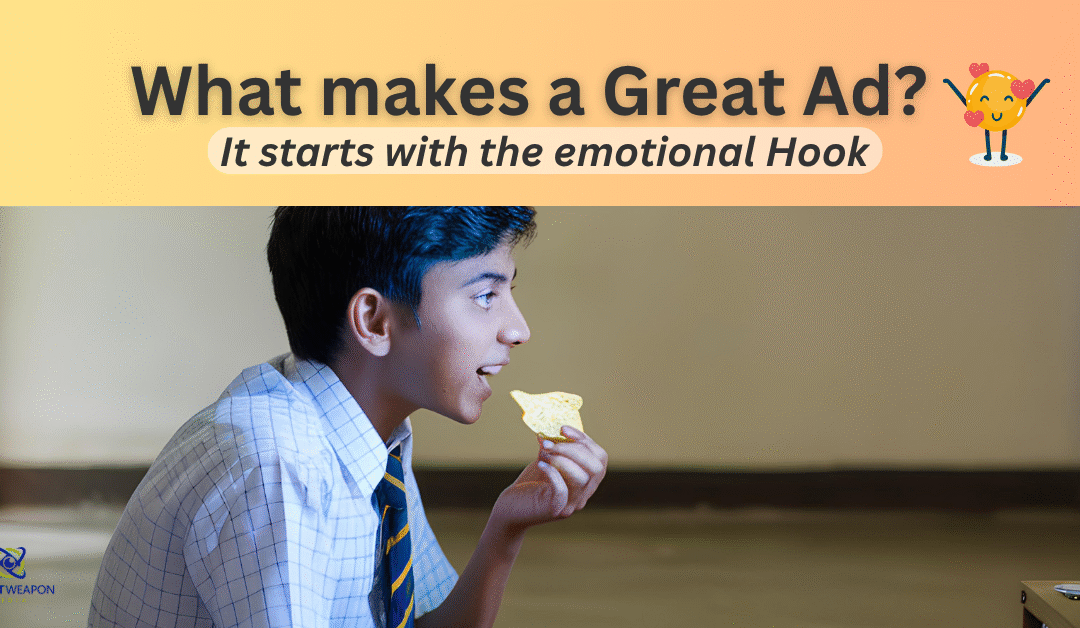What Makes a Great Ad? Start with the Emotional Hook
I get asked this all the time:
“How do you come up with a good ad?” Or more specifically—how to create a great ad that actually works.
A great ad starts with a clear emotional hook, speaks to what the customer truly wants, and follows a proven structure. Without emotional resonance, even well-designed ads often get ignored. Here’s the truth—when I started out in media, I leaned on the pros. I used resources from the Radio Advertising Bureau, picked the brains of professional copywriters, and took direction from program and promo directors.
Then I read everything I could get my hands on:
📚 Guerrilla Marketing, The Wizard of Ads, you name it.
But the real turning point?
It came at a workshop hosted by another agency. Yep, another agency. And they broke it down into something so simple, so practical, that I’ve used it in every ad since. I didn’t wait until I got home to try it—I reworked our latest script from my hotel room that night. Then I called someone I trusted, asked for a quick favor… and they said yes. That was the start of the framework I’ve now refined over 10+ years. It’s not magic—it’s just a method that works. And every month, we use it to create ads that perform. After years of testing, I developed a repeatable system for how to create a great ad—one that consistently drives response, not just awareness.
The 4-Part Framework That Drives Results
I use a 4-part framework to create high-performing ads. The first—and most important—step is the emotional hook. A great ad starts by tapping into what the customer really wants. Without that connection, even polished ads fall flat.
Clients ask me all the time:
“Can’t we just leave this part out?”
“Can’t we add this one thing in?”
And sometimes, we try it—just to test. But when we break the system? We almost always see clicks drop, traffic decline, or conversions slide. (Yep, we actually track that data too.)
Why the Emotional Hook Is Essential in Advertising
Without it, your ad is just noise. And one big reason brands get it wrong?
They’ve forgotten the real emotion behind what their customers want. According to Mailchimp, emotional appeal ads are more memorable than purely informational ones—because emotions help anchor your message in the brain. And as Neuroscience Marketing reports, emotional campaigns can outperform rational ones dramatically—boosting profitability by 31% compared to just 16% for rational campaigns.
People don’t buy RVs.
They buy family time—and memories that last a lifetime.
People don’t buy marketing services.
They buy relief. Clarity. A plan that works.
So let me ask you:
Does your emotional hook truly resonate with your customers—right now, today?
If it does, great—you just earned a few more seconds of their attention.
If it doesn’t? They’ll scroll right past.
📘 Want Help Creating Ads That Actually Work?
If your ads aren’t connecting—or if you’re tired of throwing money at campaigns that don’t deliver—you’re not alone.
Maybe you’ve been frustrated trying to figure out how to create a great ad that truly connects with your audience and drives real results.
That’s exactly why we created our free guide- The Field Guide to Information Warfare.
It’s a free resource built for business owners and marketing leaders who are ready to cut through the noise with smarter messaging, sharper strategy, and clearer direction. Inside the guide you’ll discover:
- How to stop wasting money on confusing, low-performing ads
- A simple approach to sharpen your message and attract real buyers
- How to outsmart—not outspend—the big guys
- Ways to fix “ad fatigue” without starting from scratch
And keep an eye out for next blog post—I’ll be breaking down another essential piece of the 4-part ad framework I mentioned above.

